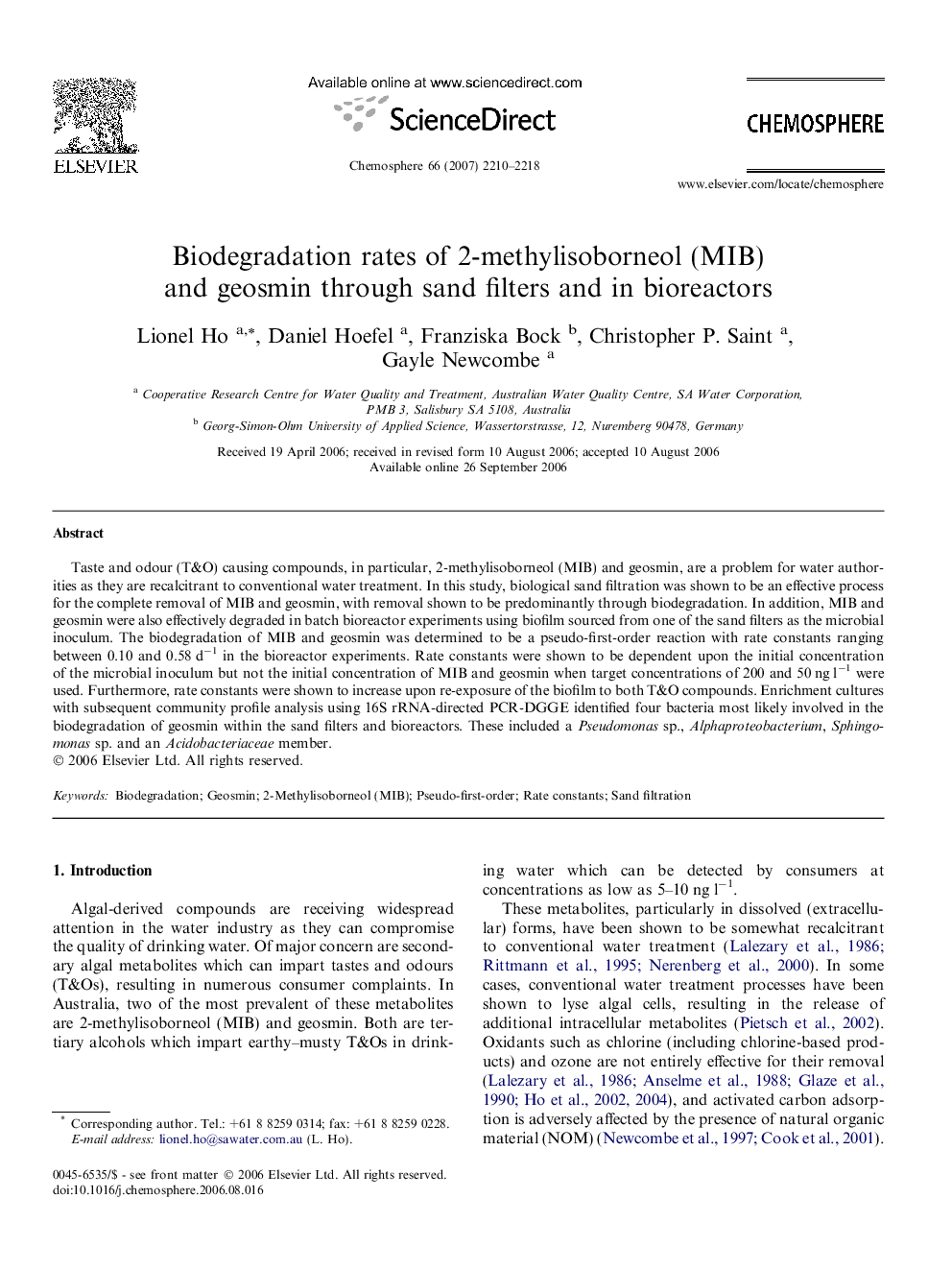| Article ID | Journal | Published Year | Pages | File Type |
|---|---|---|---|---|
| 4415996 | Chemosphere | 2007 | 9 Pages |
Abstract
Taste and odour (T&O) causing compounds, in particular, 2-methylisoborneol (MIB) and geosmin, are a problem for water authorities as they are recalcitrant to conventional water treatment. In this study, biological sand filtration was shown to be an effective process for the complete removal of MIB and geosmin, with removal shown to be predominantly through biodegradation. In addition, MIB and geosmin were also effectively degraded in batch bioreactor experiments using biofilm sourced from one of the sand filters as the microbial inoculum. The biodegradation of MIB and geosmin was determined to be a pseudo-first-order reaction with rate constants ranging between 0.10 and 0.58 dâ1 in the bioreactor experiments. Rate constants were shown to be dependent upon the initial concentration of the microbial inoculum but not the initial concentration of MIB and geosmin when target concentrations of 200 and 50 ng lâ1 were used. Furthermore, rate constants were shown to increase upon re-exposure of the biofilm to both T&O compounds. Enrichment cultures with subsequent community profile analysis using 16S rRNA-directed PCR-DGGE identified four bacteria most likely involved in the biodegradation of geosmin within the sand filters and bioreactors. These included a Pseudomonas sp., Alphaproteobacterium, Sphingomonas sp. and an Acidobacteriaceae member.
Keywords
Related Topics
Life Sciences
Environmental Science
Environmental Chemistry
Authors
Lionel Ho, Daniel Hoefel, Franziska Bock, Christopher P. Saint, Gayle Newcombe,
